By Tara Beresh, Curatorial and Collections Manager
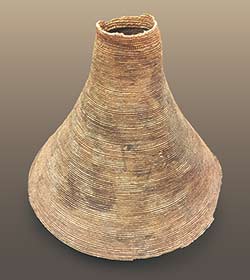 |
| The Moab load basket prior to conservation. |
If you’re local to Moab, you’re likely aware of the renowned “burden” basket—an extraordinary ancestral relic, iconic to the area and sacred to local Native groups. Out of respect to ancestral Native people, it is now referred to as the load basket, or load-bearing basket, removing the connotations implicit in the word “burden.” The cone-shaped basket, styled to be worn like a backpack, is woven from willow and yucca, and was discovered in 1990 in the canyons south of Moab.
Today, in adherence with an agreement with the Bureau of Land Management, and a renewed commitment to professional object care, the Moab Museum is funding conservative treatment for the basket before its return to the museum in late March, 2022. We are eager for the basket to be viewable to the public once again, this time in an archival capacity. The new display case for the basket was custom designed to be airtight, moisture prohibitive, and monitored for temperature fluctuations.
Exploring the Archaeological Significance of the Ancestral Load Basket
We know this basket is extraordinary… extraordinarily old, rare, and very local… but what else can it tell us from an archaeological perspective? First, we examine four types of basketry construction techniques common to the Four Corners Region: simple plaiting, twill plaiting, two-strand weft twining, and coiled. Coiled basketry, the technique used to construct the load basket, has several stitch techniques. Of these techniques, rod-and-bundle is associated with basketry found in the Canyonlands region dating from the Fremont to Pueblo eras (8,000 B.C. to A.D. 1300). Rod-and-bundle refers to a stick, twig, or reed (the rod) accompanied by a flexible element of loose plant material such as grass (the bundle). The stitch element, a strip of wood, bark, leaf or other plant, is sewn over and around the rod-and-bundle foundation. Different techniques, or in some cases, the number of rods used can be found in different cultures and time periods.
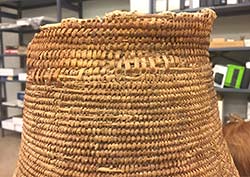 |
| Detail of the Moab load basket’s two rod and bundle construction. This is the narrowest part of the basket which is joined to the base. photo: Tara Beresh |
In 1999, Archaeologist Sharyl A. Kinnear-Ferris conducted a research project on woven perishables—artifacts woven or sewn from plant fibers, animal fur, hair, or feathers—as part of her master’s fulfillment at Regis University, Denver CO. Kinnear-Ferris researched the theory that the Colorado River served as a clear boundary between Fremont and Ancestral Pueblo cultures, and that basketry construction techniques differ from each side of the Colorado River in the Glen Canyon region: the north’s one rod-and-bundle weaving technique, and the south’s two rod-and-bundle weaving technique. Kinnear-Ferris’ research argues that the Colorado River did not serve as a clear boundary between the two cultures in the Canyonlands Region.
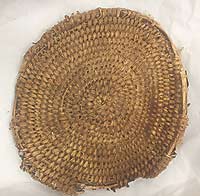 |
| Detail of the Moab load basket’s two rod and bundle construction. This is the base of the basket which at one time was woven to the basket. Conservation treatment will stabilize the basket to prevent future breakage and disarticulation, such as this. photo: Tara Beresh |
The results of Ferris’ study find Fremont one-rod-and-bundle basketry on both the north and south sides of the river, and Ancestral Pueblo two-rod-and-bundle basketry on the south side of the river, except for one. The mixture of techniques north and south of the river in the Canyonlands area suggest that one group may have influenced the other, or that groups traded, interacted, or integrated over time. Another explanation may be found in the topography. While Glen Canyon provides much less opportunity for casual travel, the Moab Valley allows for more cultural contact and mixing of populations. Kinnear-Ferris states that, “The Colorado River near Moab has served as a crossing point historically. The Old Spanish Trail passed through the area and crossed the river at Moab since it is one of only a few sites in the Canyonlands region where the river can be readily reached and crossed. Prehistorically, the river crossing at Moab may have allowed easy movement of peoples and ideas.”
Kinnear-Ferris’ study also reveals that the basket exhibits construction styles characteristic of the earlier Basketmaker II time, yet radiocarbon dating of the base of the basket indicates a later Pueblo II time, posing even further questions. The contradiction may suggest a relationship between occupants of the Canyonlands region and those inhabiting other regions to the south, or that different portions of the baskets were woven at different times or by different weavers.
The load basket and its two-rod-and-bundle construction is more than simply evidence of people in the Moab area as early as A.D. 855; it also provides insights into prehispanic lifeways and cultural-social relationships over time. Efforts to preserve invaluable artifacts such as the Moab load basket are crucial toward deepening our understanding of history in the Canyonlands region.
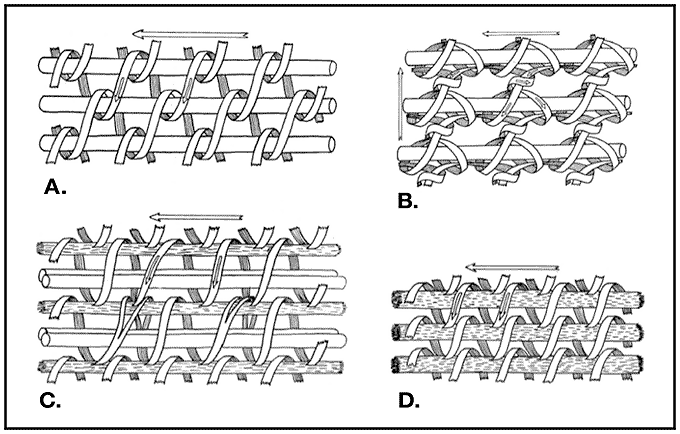 |
| Coiled basket foundation structures: A. Close coiling on a one-rod foundation with interlocking stitches; B. Spaced coiling with an intricate stitch on a one-rod foundation with interlocking stitches; C. Close coiling on a two-rod-and-bundle foundation with (primarily) non-interlocking stitches; D. Close coiling on a bundle foundation with non-interlocking stitches |
For more foundational information, visit our page on the load-bearing basket at moabmuseum.org/load-bearing-basket/ or feel free to reach out to staff directly. The Museum is open Tuesday through Saturday, 10 a.m. to 6 p.m. Become a member and directly support the preservation of the region’s cultural and natural history.
Reference: An Analysis of Canyonlands Region Woven Perishables and a Comparison with Those of Surrounding Regions: A Research Project Presented in Partial Fulfillment of the Requirement for the Degree Master of Arts in Liberal Studies at Regis University, Denver, Colorado. By: Sharyl A. Kinnear-Ferris, 1999
www.moabmuseum.org • 118 East Center Street, Moab, UT • 435-259-7985
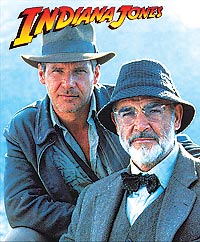 Red Cliffs Lodge, on the banks of the mighty Colorado River, is home to the Moab Museum of Film & Western Heritage. The lodge is built on the old George White Ranch, a key location for nine of the big westerns including Rio Grande, Cheyenne Autumn, Ten Who Dared, The Commancheros, and Rio Conchos.
Red Cliffs Lodge, on the banks of the mighty Colorado River, is home to the Moab Museum of Film & Western Heritage. The lodge is built on the old George White Ranch, a key location for nine of the big westerns including Rio Grande, Cheyenne Autumn, Ten Who Dared, The Commancheros, and Rio Conchos.
The late George White was founder of the Moab to Monument Valley Film Commission, the longest ongoing film commission in the world.
In the museum one can learn more about film locations, how the sets are built, and how the filming process is managed on nature’s own sound stage. On display in the museum are production photographs, movie posters, autographed scripts, props from the many pictures filmed in the area, and displays about the western ranching heritage. For information, call Red Cliffs Lodge at 435-259-2002.
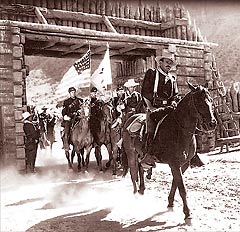 Through the magnificent landscapes of southeastern Utah, writers have been inspired and stories born here. Zane Grey, the famous western novelist, traveled through the area in 1912. His visit inspired him to write his book Riders of the Purple Sage. The book was made into a movie starring Ed Harris and Amy Madigan, and filmed on locations around Moab.
Through the magnificent landscapes of southeastern Utah, writers have been inspired and stories born here. Zane Grey, the famous western novelist, traveled through the area in 1912. His visit inspired him to write his book Riders of the Purple Sage. The book was made into a movie starring Ed Harris and Amy Madigan, and filmed on locations around Moab.
| A partial list of stars that have made movies in Moab John Wayne, Maureen O'Hara, Henry Fonda, Lee Marvin, Rock Hudson, Jimmy Stewart, Richard Boone, Anthony Quinn, Mickey Rooney, Shirley Temple, Kris Kristofferson, Billy Crystal, Robert Duvall, Gene Hackman, Bill Murray, Jack Palance, Susan Sarandon, Geena Davis, Ted Danson, Tom Cruise, and many more. |